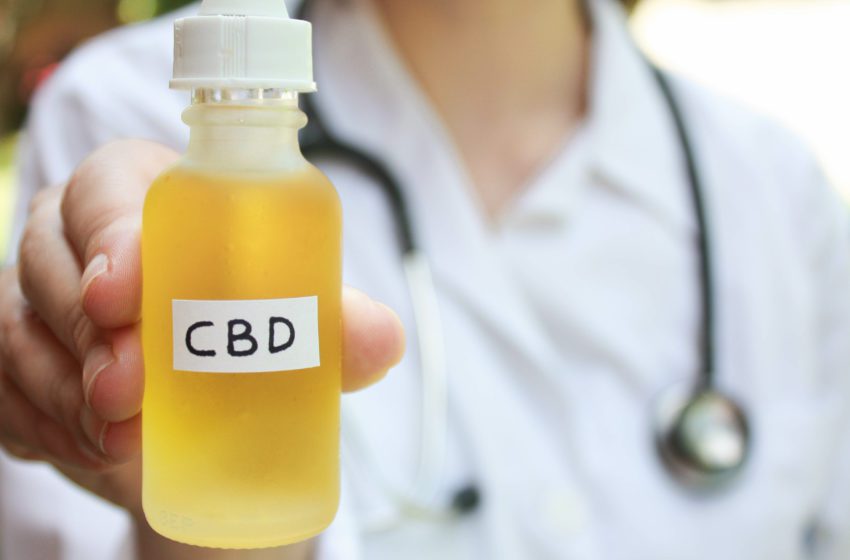
Nicotine’s lessons for cannabis regulation
By Cheryl K. Olson and Willie McKinney
From the industry perspective, regulation of tobacco products by the U.S. Food and Drug Administration went from impatient foot-tapping to a lurching roller-coaster ride. The recently released “operational evaluation” of the FDA’s tobacco program, requested by Commissioner Robert Califf, lays out in sedate but clear terms some causes of industry’s frustrated exhaustion: years of delay in establishing requirements. Sudden major shifts in policy. Cycles of litigation and reprieve.
Based on feedback from FDA employees, and people from industry and public health, the independent Reagan-Udall Foundation for the FDA made recommendations to start repairing the regulatory mess. After “observ[ing] that CTP [Center for Tobacco Products] has been forced to operate primarily in a reactive mode, moving from one challenge to the next,” the first recommendation to the agency is to get proactive. The Reagan-Udall panel encouraged the CTP to make time now to “think strategically about where it is today and where it needs to go in the next several years.”
This advice might apply equally to whatever future the FDA faces with regulation of cannabis products. The FDA has authority over cannabis and its dozens of biologically active chemical compounds, including CBD and THC. Although marijuana falls under the federal Controlled Substances Act, the 2018 Farm Bill removed hemp (a low-THC cannabis plant and its derivatives) from that definition.
Principal Deputy Commissioner Janet Woodcock recently announced in a press release that existing regulatory frameworks for food and supplements are not appropriate for CBD. “The agency is prepared to work with Congress” on a new pathway, she stated.
What might we take from the U.S. tobacco experience to ease headaches for future cannabis regulation? Below are some points to ponder in three areas: regulatory structure, medical versus recreational use, and the effects of misinformation on regulation.
What Should a New Structure Look Like?
First, what regulatory structure makes sense: Should the FDA create an all new one for cannabis products, or should it employ some existing channels? Consider the tobacco parallel.
“Safe and effective” is the FDA’s traditional standard for evaluating drugs and medical products. In the 1990s, then Commissioner David Kessler tried to assert the FDA’s authority to regulate nicotine as a drug—intended by industry to affect the body’s structure or function—and cigarettes as delivery devices. A 2000 Supreme Court ruling found that the “s and e” standard left no room for regulation of tobacco.
In 2009, when Congress chose to place tobacco under FDA jurisdiction, a novel department was created. But this promising, fresh science-based regulatory approach for tobacco faced headwinds. This Center for Tobacco Products was largely staffed by people rotated from elsewhere in the FDA. The “appropriate for the protection of public health” (APPH) tobacco standard was a difficult departure from their accustomed ways and views. The combination of suspicion from past industry misbehavior and the political uproar over youth vaping fostered an “us versus them” mindset. The founding legislation’s focus on cigarettes, the most deadly of tobacco products, affected attitudes toward emerging alternative nicotine products with the potential to greatly reduce disease risks for people who smoke.
Perhaps there is light at the end of the tunnel. The FDA appears to recognize that shoehorning cannabis into existing structures has its own problems. Each type of intended use must find a fit in an existing department, such as human food, veterinary products, cosmetics or drugs. Under the Federal Food, Drug and Cosmetic Act, a drug is any product (including marijuana or hemp) intended to affect the structure or function of the body or intended to diagnose, cure, mitigate, treat or prevent disease.
What factors will influence staff mindset about cannabis in these various departments? How will that affect regulation?
Medical vs. Recreational Pathways
Another issue: How best to regulate cannabis for medical versus recreational use? Like tobacco, cannabis has been used historically for medical purposes, such as treating pain. Both nicotine and cannabis are reportedly used to self-medicate for mental health disorders. Use of marijuana to manage mood disorders is reportedly higher in states with medical marijuana laws. But there currently is no such thing as “medical” marijuana. (This is not unlike the confusion over what constitutes “natural” food.) The FDA drug pathway would create medical cannabis. A standardized product would be evaluated for quality, safety and efficacy for a particular medical indication.
We lack randomized, controlled clinical trial data on whether cannabis effectively treats disorders such as depression. However, such studies could be done by industry and submitted to the FDA’s Center for Drug Evaluation and Research. Several specialty products containing THC or CBD (e.g., for chemotherapy-related nausea or severe forms of epilepsy) have emerged from this path.
But what regulatory pathway might recreational cannabis take? And what complications arise from product format and route of administration: smoked, vaped, applied to skin or eaten? Where would combusted flower fit?
Nicotine is regulated by the FDA as a drug and as a recreational product. Two paths for cannabis also make sense. Although there is overlap (to get technical: Gum bases that contain nicotine are regulated as both pharmaceuticals and recreational tobacco products), combusted tobacco products that contain nicotine are only regulated by the Center for Tobacco Products.
We propose that Congress modify the 2009 Tobacco Control Act to give the CTP authority over combusted and vaped cannabis. Such products are very unlikely to pass the “safe and effective” drug standard, but the APPH standard may be applicable to recreational cannabis. And the CTP has built up expertise in combusted and vaped products.
Keep Moral Panic Out of Regulation
A third issue deserving of thought is how to prevent moral panic and misinformation from derailing the potential benefits of cannabis. One lesson from nicotine is how these can fog the ability of regulators, politicians and the public to see data clearly.
Research shows that youth use of nicotine and cannabis (as well as alcohol and other substances) overlap. A 2022 analysis of Population Assessment of Tobacco and Health study data found that more than half of e-cigarette users aged 15 to 24 had vaped cannabis. At the population level, teen cannabis youth has been fairly stable for the last quarter century. However, there will be concerns that the spread of state laws legalizing cannabis for adults could ease access for youth.
Once it takes hold, misinformation is hard to uproot. Witness stubborn rates of misbelief that the outbreak of vaping-related lung injuries (e-cigarette or vaping product use-associated lung injury, or EVALI) were caused by e-cigarettes instead of THC vapes adulterated with vitamin E acetate.
We see signs of a potential moral panic over cannabis. When the Centers for Disease Control and Prevention noted that marijuana vaping was most often linked to EVALI, the Wall Street Journal editorial board decried the “risky social experiment [of] legalizing and especially destigmatizing cannabis”—a drug that “could be damaging young brains for a lifetime.” News reports tout studies suggesting higher potency cannabis could mean higher risks of addiction and health harms.
Research to clarify the specific nature of cannabis risks to youth is needed. We also need research on the current state of cannabis misinformation, including overly rosy views of risk that could create a backlash when problems are publicized. Using the results of this research for outreach ASAP, before the pot panic gets rolling, could soften the impact.
Scrutinize and Enforce
To avoid repeating mistakes of the past, we also need rigorous oversight. The FDA has been criticized for reluctance to use its powers to remove illegal nicotine vapes from the market. Some companies continue to sell despite warning letters. We need to study what cannabis products drive youth use and proactively target those makers and distributors.
Products likely to attract underage users deserve particular scrutiny. Although no deaths were reported, a study in the journal Pediatrics2 documented a worrisome increase in child poisonings from edible cannabis products. To protect both adult access and child well-being, it’s common sense to require that edibles come in clearly marked, child-resistant packaging with no resemblance to candy.
We have tools to unmask the bad actors. Youth will tell us in surveys what products they buy. The FDA’s own National Youth Tobacco Survey identified products not legally on the market, such as Puff Bar and Hyde, as favorite brands (Hyde was identified through write-in responses).
With nicotine, regulatory delays and gray areas (such as regulation of synthetic nicotine) were abused by companies willing to skirt the law for quick profit. We see analogous situations with cannabis. One example is hemp-derived delta-8 THC products, said to produce a milder high similar to that from marijuana-derived delta-9 THC. Sales are rising fast. So are concerns. There are safety risks from impurities created during delta-8 manufacturing. And public confusion over delta-8’s legal status could complicate marijuana legalization efforts.
The Reagan-Udall Foundation review of the CTP highlighted the need for “truthful and accurate information to help adult consumers make informed decisions about the role of nicotine” and product-specific risks. This applies equally to cannabis.






















